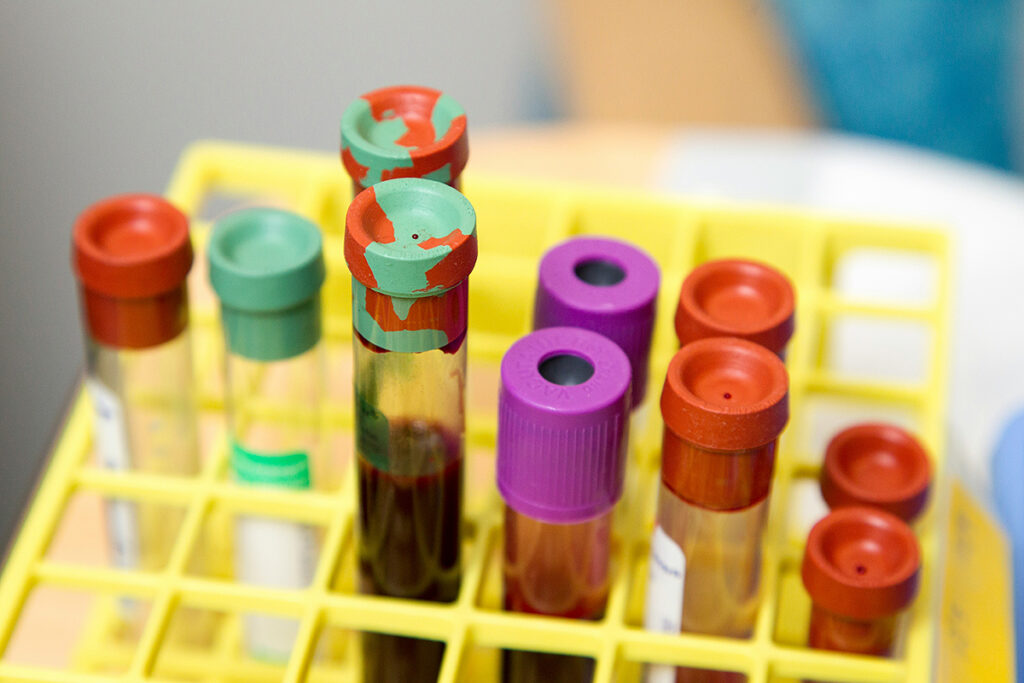While most COVID-19 patients fully recover, a subset grapples with persistent symptoms such as fatigue, shortness of breath, and cognitive dysfunction. This protracted state is called post-COVID syndrome and can extend for over 35 weeks. A comprehensive study in the United States, comprising 270,000 individuals who had previously recovered from COVID-19, disclosed that one-third of them continued to experience symptoms 3-6 months post-recovery. Post-COVID syndrome may be associated with severe COVID-19; however, risk factors for post-COVID syndrome among non-hospitalized patients remain an enigma. An MRI study involving 201 individuals, conducted four months post-COVID-19 infection, revealed that 29% of participants had developed multi-organ failure, while 70% experienced single-organ failure. This encompasses compromised heart, lungs, kidneys, liver, pancreas, and spleen functionality. Intriguingly, severe and enduring symptoms of shortness of breath and fatigue were correlated with myocarditis, although multi-organ failure was not tied to the symptoms of post-COVID syndrome.
The meticulous investigation by British researchers sought to address two primary facets:
- The manifestation of symptoms and organ dysfunctions within one year following a COVID-19 infection, with a particular emphasis on those related to shortness of breath, cognitive dysfunction, and a decline in quality of life.
- The intricate interplay between symptoms and organ damage.
The study cohort included patients who had previously exhibited COVID-19 symptoms but no longer had active SARS-CoV-2 infection. Nevertheless, these patients continued to endure symptoms exceeding 12 weeks. Those demonstrating indications of organ dysfunction, identified through blood tests, MRI scans, or incidental discovery of anomalies such as organ abnormalities, cysts, abnormal vessels, and tumors, were invited for a six-month follow-up. Each follow-up visit encompassed MRI scans of the lungs, heart, kidneys, liver, pancreas, and spleen and comprehensive blood analyses, including general and biochemical assessments.
Symptoms of Post-COVID Syndrome
Post-COVID syndrome exhibited a higher prevalence among women and individuals grappling with obesity. These individuals commonly experienced systemic and cardiorespiratory symptoms, often accompanied by a health-related decline in their overall quality of life.
At the outset of the study, the prevalence of Post-COVID syndrome symptoms was as follows:
- Systemic symptoms: 48%
- Cardiorespiratory symptoms: 43%
- Severe shortness of breath: 38%
- Cognitive dysfunction: 48%
- Health-related decline in quality of life: 57%
Subsequent observations revealed reduced symptoms, particularly for systemic (1%) and cardiorespiratory symptoms (5%). Notably, fatigue, shortness of breath, and cognitive dysfunction continued to exhibit a persistently high prevalence.
Common symptoms that displayed improvement during subsequent observations included:
- Fatigue: decreasing from 98% to 64%
- Myalgia: decreasing from 89% to 35%
- Shortness of breath: decreasing from 90% to 47%
- Headache: decreasing from 85% to 34%
- Chest pain: decreasing from 81% to 38%
- Fever: decreasing from 73% to 2%
- Cough: decreasing from 75% to 11%
- Sore throat: decreasing from 71% to 11%
Remarkably, in 18% of patients, all symptoms had resolved entirely upon subsequent observation.
Quality of Life in Post-COVID Syndrome
At the outset of this investigation, the health-related quality of life assessment revealed a deficient state among all patients grappling with the post-COVID syndrome. These individuals encountered impediments in carrying out their daily routines and endured considerable pain. Notably, 56% reported experiencing moderate difficulties, while 45% reported severe pain. An astonishing 90% of these patients found it necessary to take time off from work due to the burdens imposed by their symptoms.
Organ Affliction in Post-COVID Syndrome
In the realm of standard biochemical tests, most results lay within the realm of normalcy, save for elevated levels observed in:
- Lactate dehydrogenase
- Creatine kinase
- Cholesterol
- Average hemoglobin concentration
Upon the initial assessment utilizing MRI scans, it was observed that 59% of patients exhibited impairments in a single organ, while 23% exhibited impairments in two or more organs. It is worth noting that these impairments were generally mild. Notably, participants with heart failure did not indicate severe cardiac dysfunction. The most prevalent findings at the study’s outset were hepatic steatosis, fibrotic kidney inflammation, and splenomegaly. Notably, hepatic steatosis was associated with systemic symptoms and severe shortness of breath.
Upon subsequent observations, the prevalence of single-organ dysfunction displayed a decline, albeit remaining at an elevated level. In contrast, multi-organ failure exhibited no reduction. Those devoid of organ impairments tended to manifest minimal symptoms compared to those grappling with dysfunction in at least one organ. At the study’s initiation, patients afflicted with lung dysfunction and impairment in three or more organs reported the highest burden of symptoms. Among the study participants, healthcare workers were notably more susceptible to liver dysfunction than others.
At the initial evaluation, 72% of participants without symptoms displayed signs of organ dysfunction. This figure subsequently decreased to 62% upon further observation. Among participants initially presenting with symptoms, 32% exhibited no signs of organ dysfunction, a percentage that increased to 42% upon subsequent assessment.
Correlation Between Symptoms and Organ Impairment
Several parameters specific to the liver exhibited associations with post-COVID syndrome symptoms:
- High liver fat content was prevalent in 31% of patients experiencing severe shortness of breath, whereas in only 21% of those without severe shortness of breath. Conversely, low liver fat content was commonly observed among individuals without severe shortness of breath.
- Enlargement of the liver correlated with a lower health-related quality of life, evident in 14% of patients with diminished quality of life compared to just 5% of those with higher quality of life.
Conclusion
The symptoms of post-COVID syndrome can endure for up to a year, even among individuals who had previously experienced a mild to moderate bout of COVID-19. Notably, multi-organ failure was identified in 29% of post-COVID syndrome patients at the 6 and 12-month marks following COVID-19 infection. Intriguingly, blood biomarkers demonstrated no discernible correlation with clinical outcomes. Neither symptoms, blood tests, nor MRI scans predicted post-COVID syndrome’s progression or recovery trajectory. However, it was observed that symptoms progressively resolved over 12 months, particularly those associated with cardiorespiratory and systemic aspects.
Significantly, three out of five individuals grappling with post-COVID syndrome exhibited dysfunction in at least one organ, while one in four displayed impairments across two or more organs, sometimes in the absence of apparent symptoms. Notably, markers of liver dysfunction were linked to an elevated risk of symptoms in female patients and those with obesity and post-COVID syndrome. Notably, a 40-minute multi-organ MRI emerged as a valuable tool for identifying patients with organ involvement in post-COVID syndrome. This, in turn, can inform the development of tailored and optimal treatment plans for these individuals.
Useful article, necessary information? Share it!
Someone will also find it useful and necessary:
Reference
Multi-organ impairment and long COVID: a 1-year prospective, longitudinal cohort study



